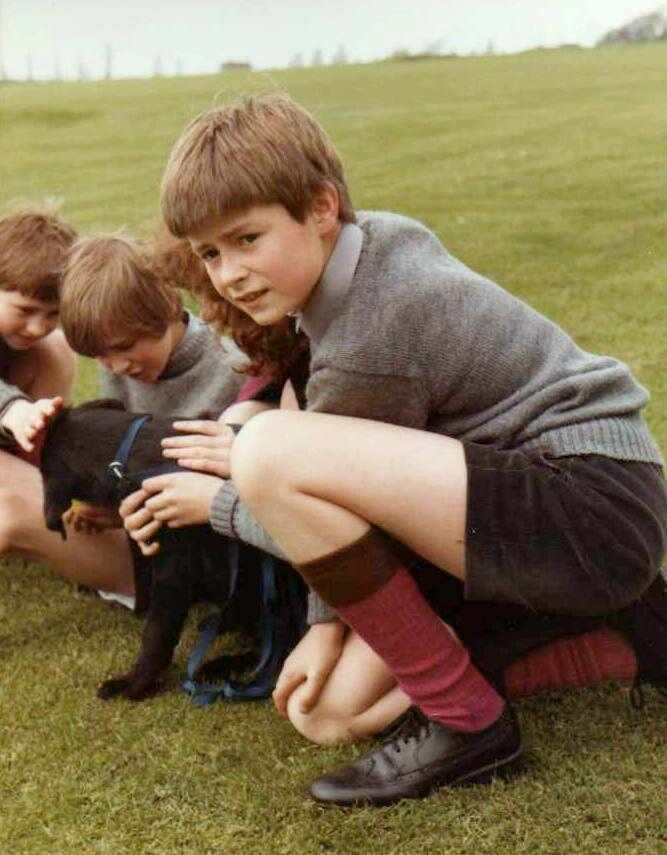
Figure 1.--Boys at many Scottish prep schools wore brightly colored knee socks. Boys in England usually wore grey knee socks. |

|
We have little information on school hosiery in the early- and mid-19th century. This is in part because so many boys wore long trousers to school. This began to change in the late-19th cetury as various types of shortened-length trousers became popular for boys. We note many children wearing long stockings in the late-19th century. This varies some what from country to country, in part as a result of climate. Fashion was, however, very important. We see more vriation in the early 20th century, but this varied from country to cuntry. Knee socks seem quite common in Britain during the early-20th century and boys began waring short pants. American boys continued wearing mostly long stockings, but knee pants soon gave way to knickers. Younger boys might wear socks. Long stockings continued to be widely worn in Germany, but became to some extent a seasonal garment. French boys mostly wore socks, but long stockings were worn in the winter, especially in northern areas. We see many boys on the Continent wearing three-quaarter socks. After World War I, knee socks became increasingly popular. American boys grdualy shidted from long stockings to knee socks. Brightly coored knee socks became popular with knickers. American boys by the time of World War II were increasingly wearing ankle socks. They wre not as common in Europe where knne soks continued to be popular for some time, especially in Britain. Many private schools had special knee socks with colored tops. Ankle socks gradually became the dominant type of hosiery in Europe as well.
We have little information on school hosiery in the early- and mid-19th century. This is in part because so many boys wore long trousers to school. This began to change in the late-19th cetury as various types of shortened-length trousers became popular for boys. We note many children wearing long stockings in the late-19th century. This varies some what from country to country, in part as a result of climate. Fashion was, however, very important.
We see increasing variation in hosiery during the early-20th century, but this varied from country to cuntry. America children mostly wore long stockings, especially black long stockinbgs at the turn-of-the 20th century. The trends in Europe were more varied. Many children wire three-quarter socks as well as long stockings. Knee socks seem quite common in Britain, although this is a little difficult to tell in the early-20th century as short pants were so long. during the early-20th century and boys began waring short pants. American boys continued wearing mostly long stockings, but knee pants soon gave way to knickers. Younger boys might wear socks. Long stockings continued to be widely worn in Germany, but became to some extent a seasonal garment. French boys mostly wore socks, but long stockings were worn in the winter, especially in northern areas. We see many boys on the Continent wearing three-quaarter socks. After World War I, knee socks became increasingly popular. American boys grdualy shidted from long stockings to knee socks. Brightly coored knee socks became popular with knickers. American boys by the time of World War II were increasingly wearing ankle socks. They wre not as common in Europe where knne soks continued to be popular for some time, especially in Britain. Many private schools had special knee socks with colored tops. Ankle socks gradually became the dominant type of hosiery in Europe as well. Anklesocks became increasingly common after World War II in America and with a slight timne lag, in Europe as well. Tube socks with colored bands became popular in America during the 1970s. Knee socks were worn by Cubs and Scouts until the end of the dentury. Some schools continued to require knee siocks in Britain.
Related Chronolgy Pages in the Boys' Historical Web Site
[Main Chronology Page]
[The 1900s]
[The 1910s]
[The 1920s]
[The 1930s]
[The 1940s]
[The 1950s]
[The 1960s]
[The 1970s]
[The 1980s]
[The 1990s]
[The 2000s]
Navigate the Relate Boys Historical Clothing Uniform Garment Pages
[Return to the Main school hosiery page]
[Return to the Main garment page]
[Blazers]
[Bookbag]
[Caps]
[Coats]
[Kilts]
[Pants]
[Shirts]
[Shoes]
[Smocks
[Suits]
[Seaters]
[Ties]
Navigate the Boys' Historical Clothing School Uniform Country Pages
[Main School Uniform Page]
[Main National School Uniform Page]
[Australia]
[England]
[France]
[Germany]
[Ireland]
[Italy]
[Japan]
[New Zealand]
[Poland]
[Singapore]
[Scotland]
[Singapore]
[United States]
Navigate the Boys' Historical Clothing Web Page
[Introduction]
[Activities]
[Biographies]
[Chronology]
[Clothing styles]
[Countries]
[Bibliographies]
[Contributions]
[FAQs]
[Glossary]
[Images]
[Links]
[Registration]
[Tools]
[Boys' Clothing Home]
